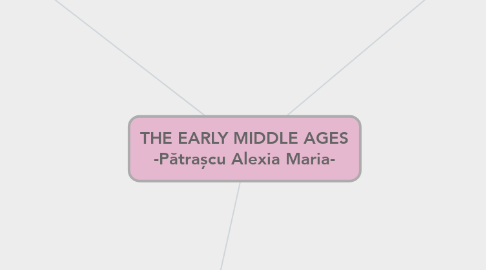
1. Government and society
1.1. The growth of government
1.1.1. England's government went through several changes during the middle ages. From the Anglo-Saxons' hierarchal and hereditary society, it evolved later on into a centralised royal administration, then in a feudal system which was later on abolished by the writing of the Magna Carta Libertatum. The final and current form of governing was established in the 13th century and it was called the "Parliament".
1.2. Law and justice
1.2.1. In the beginning, the right of jurisdiction gave judicial power to the nobles and lords in cases arising in their domains and had no appeal but to the King himself. Then, the Church slowly took over.
1.3. Religious beliefs
1.3.1. Most people in the Middle Ages lived their lives fully believing in the reality of a spiritual realm all around them and in heaven or hell when they died. At this time, the people of the British Isles were Roman Catholic and the majority of people strongly believed in this religion and its values.
1.4. Ordinary people in country and town
1.4.1. Most people in the Middle Ages lived in small villages of 20 or 30 families, and worked as farmers - according to the Domesday Book, only 10% of the population lived in towns. However life in the Middle Ages was not all hard work: Gambling and certain sports were played on "Holy days" (from which we get our holidays).
1.5. The growth of towns as centres of wealth
1.5.1. Many cities developed and grew a lot economically due to the fact that they were religious centers - attracted by the church, rich people settled about, and the church itself was a source of great income, thus helping cities grow.
1.6. Language, literature and culture
1.6.1. Under the influence of the new aristocracy, Law French became the standard language of courts, parliament, and polite society. As the invaders integrated, their language and literature mingled with that of the natives, while Old English underwent a gradual transition into Middle English. Political power was no longer in English hands, so the West Saxon literary language had no more influence than any other dialect. While Anglo-Norman or Latin was preferred for high culture and administration, English literature by no means died out, and a number of important works illustrate the development of the language. Around the turn of the thirteenth century, Layamon wrote his "Brut", based on Wace's twelfth century Anglo-Norman epic of the same name. With time, the English language regained prestige, and in 1362 it replaced French and Latin in Parliament and courts of law. Early examples of Middle English literature are the Ormulum, Havelock the Dane, and Thomas of Hales's Love Rune.
2. The power of the kings of England
2.1. Church and state
2.1.1. The Medieval Church played a far greater role in Medieval England than the Church does today. In Medieval England, the Church dominated everybody's life. All Medieval people – be they village peasants or towns people – believed that God, Heaven and Hell all existed. The control the Church had over the people was total.
2.2. Dealing with the Celts
2.2.1. The Celts moved westwards into Cornwall and Wales and across the Channel into Britanny (on the lands we now call "Celtic") as the Saxons expanded out of the east and south of England.
2.3. The beginnings of Parliament
2.3.1. The first English Parliament was convened in 1215, with the creation and signing of the Magna Carta, which established the rights of barons (wealthy landowners) to serve as consultants to the king on governmental matters in his Great Council. The Great Council was first referred to as “Parliament” in 1236.
3. Conquest and feudal rule
3.1. The Norman Conquest
3.1.1. The Norman conquest of England (in Britain, often called the Norman Conquest or the Conquest) was the 11th-century invasion and occupation of England by an army made up of Normans, Bretons, Flemish and men from other provinces of the Kingdom of France, all led by the Duke of Normandy later styled William the Conqueror.
3.1.2. The Norman conquest of England (in Britain, often called the Norman Conquest or the Conquest) was the 11th-century invasion and occupation of England by an army made up of Normans, Bretons, Flemish and men from other provinces of the Kingdom of France, all led by the Duke of Normandy later styled William the Conqueror.
3.2. Feudalism\Kingship:a family business
3.2.1. Feudalism was a combination of the legal, economic, military, and cultural customs that flourished in Medieval Europe between the 9th and 15th centuries. Broadly defined, it was a way of structuring society around relationships that were derived from the holding of land in exchange for service or labor.
3.3. Magna Carta and the decline of feudalism
3.3.1. Magna Carta Libertatum, commonly called Magna Carta, is a royal charter of rights agreed to by King John of England at Runnymede, near Windsor, on 15 June 1215. The giving of rights to the poorer citizens with the help of this book abolished feudalism.

